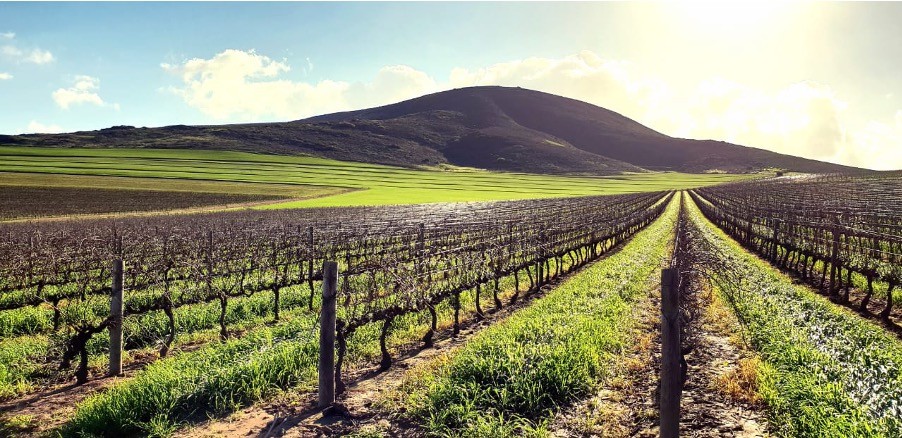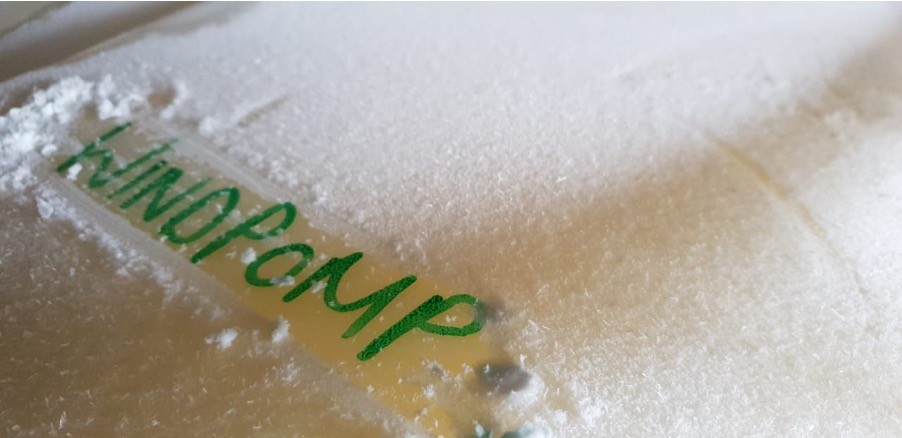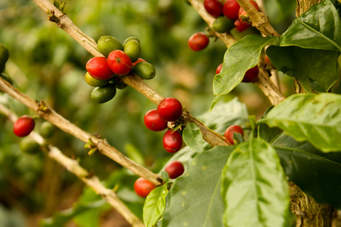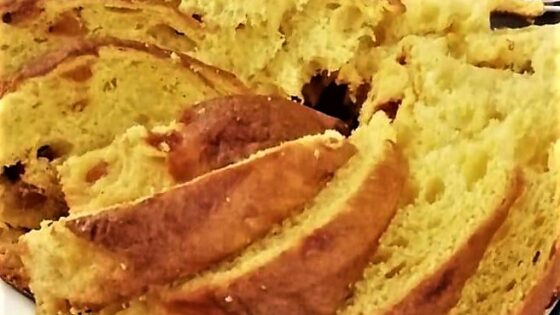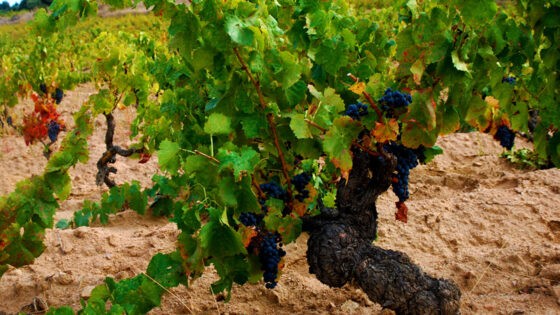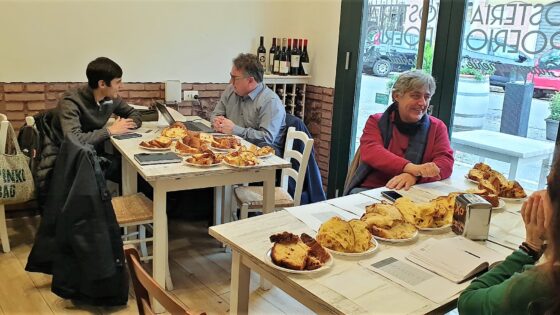
By Carien Cotzee
Traduzione in italiano tratta dal sito internet del Concorso Mondiale del Sauvignon.
Gli aromi freschi sono tra le qualità più ricercate nel vino. In Sudafrica, alcune cantine hanno letteralmente cercato la freschezza, congelando il succo. La consulente enologa e ricercatrice Dr.ssa Carien Coetzee spiega quanto hanno avuto successo.
Nel 2017, la Diemersdal Wine Estate sconvolse l’industria vinicola sudafricana con un vino rivoluzionario a base di succo di Sauvignon Blanc congelato. Le uve raccolte a macchina venivano pressate e il succo veniva posto in serbatoi di plastica prima di essere collocato in container refrigerati. Dopo quattro mesi il succo congelato è stato delicatamente scongelato sotto il sole invernale, dopodiché la fermentazione e la vinificazione hanno avuto luogo normalmente nella cantina quiescente. La cantina ha giustamente chiamato il vino Winter Ferment Sauvignon Blanc .
” È iniziato come un esperimento, ma dopo solo due annate il Winter Ferment si sta dimostrando uno dei vini più apprezzati nell’offerta Sauvignon Blanc di Diemersdal “, afferma Thys Louw, proprietario-enologo di Diemersdal. Il risultato? Un vino con intensi aromi di uva spina, guava e pompelmo dolce con un cuore di mineralità. Oltre all’intensa espressione di frutta, l’acidità naturale crea equilibrio nella consistenza ricca e avvolgente concentrata. Louw descrive il vino come il più “stile New World del Sauvignon Blanc” che abbia mai realizzato.
Ciò che è iniziato come ricerca di un’espressione ottimale di frutta tropicale unita a freschezza e complessità ha portato a un vino con alte concentrazioni inaspettate di tioli volatili rispetto alla controparte non congelata. I tioli volatili sono potenti composti aromatici responsabili di attributi come guava, frutto della passione, pompelmo e foglia di pomodoro e sono particolarmente diffusi nei vini del Sauvignon Blanc. “Per ragioni sconosciute, il vino mostra aromi e analisi chimiche che non ho mai incontrato in nessuno dei vini Sauvignon Blanc prodotti a Diemersdal”, afferma Louw, che produce Sauvignon Blanc a Diemersdal dal 2005.
L’impatto della durata e della fase di congelamento
Nel 2019, un gruppo di ricerca in Australia ha testato gli effetti del congelamento dell’uva e del succo di Sauvignon Blanc sulla composizione e sulla qualità del vino. I risultati hanno mostrato che la vinificazione criogenica ha avuto un effetto significativo sulla composizione del vino, in particolare sulla concentrazione di tioli volatili. Rispetto ai vini fermentati direttamente dopo la pigiatura, i vini ottenuti da uve e/o succhi congelati hanno prodotto una concentrazione di tiolo volatile fino a 10 volte maggiore e quindi un’intensità aromatica più elevata. Attualmente, è in corso un altro ampio studio, condotto da ricercatori sudafricani e finanziato dall’industria Winetech, per studiare l’effetto di fattori come la durata del congelamento e la fase di congelamento (uva vs succo torbido vs succo chiaro). I risultati di questo studio consentiranno all’industria di applicare condizioni di congelamento ottimali e di aiutare a identificare i meccanismi responsabili dell’aumento del contenuto di tiolo.
Nel frattempo, Winter Ferment di Diemersdal si sta rivelando uno dei vini Sauvignon Blanc più premiati del Sudafrica dopo solo tre annate sul mercato con, tra gli altri, tre premi consecutivi FNB Top 10 Sauvignon Blanc e una medaglia d’oro al Concours Mondial du Sauvignon nel 2019 e un argento nel 2020. Oltre al successo ottenuto nelle competizioni enologiche, il Winter Ferment è stato un successo immediato presso i consumatori. Il motivo sembra risiedere nei palpabili espressivi aspetti tropicali (elementi tiolici). Ciò è sottolineato dalla storia dietro il fermento invernale – la produzione di vino usando un’innovativa tecnica di vinificazione come il congelamento e lo scongelamento di succo non fermentato afferra l’immaginazione del consumatore e aggiunge un pizzico di magia in più all’esperienza sensoriale.
Succo congelato destinato al “fermento invernale”
Come la fermentazione invernale sta aprendo un mondo completamente nuovo per il Sauvignon Blanc
Altre cantine hanno seguito l’esempio o hanno anche usato tecniche simili per qualche tempo, anche se spesso usano il vino come componente di miscelazione o potrebbero semplicemente imbottigliarlo sotto la loro “solita” etichetta. La tecnica può apportare ulteriori vantaggi alla razionalizzazione della logistica in cantina e consente al produttore di immettere sul mercato un vino più fresco nel corso dell’anno. Il composto di tiolo volatile più potente (dei tre) è il 3-mercapto-esil acetato (3MHA) ed è notoriamente noto per essere altamente instabile a causa dell’idrolisi naturale nel tempo, portando a una significativa riduzione dell’intensità aromatica relativamente rapidamente dopo il completamento di fermentazione (quando si forma il composto).
Diemersdal è stato uno dei due finalisti nel 2018 Winery Innovator al concorso internazionale Wine & Spirits e continua a spingere per il Sauvignon Blanc. “Il “fermento invernale” apre un nuovo mondo di complessità e profondità all’amante di questo vitigno. Liberare il potenziale del Sauvignon Blanc e mostrare ciò che quest’uva può fare è parte integrante dell’ethos di Diemersdal. Non sappiamo cosa proveremo dopo, ma se c’è un’opportunità, la prenderemo in considerazione. Come ha dimostrato il fermento invernale, le possibilità nel mondo del vino sono infinite. ”
Dichiarazione di divulgazione: il dott. Carien Coetzee assiste Diemersdal nel miglioramento delle sue capacità tecniche e scientifiche, con particolare attenzione alla sua gamma di Sauvignon Blanc.
Winter fermented Sauvignon Blanc – Innovation giving South African wineries an edge
Fresh aromatics are among the most sought-after qualities in wine. In South Africa, some wineries have taken the quest for freshness literally, by freezing the juice. Consultant oenologist and researcher Dr. Carien Coetzee explains how successful they have been.
In 2017, Diemersdal Wine Estate turned the South African wine industry on its head with a revolutionary wine made from frozen Sauvignon Blanc juice. Machine-harvested grapes were pressed and the juice placed in plastic tanks before being placed in refrigerated shipping containers. After four months the frozen juice was gently thawed in the winter sun after which fermentation and vinification took place as normal in the quiescent cellar. The winery fittingly named the wine the Winter Ferment Sauvignon Blanc.
“It began as an experiment, but after only two vintages the Winter Ferment is proving to be one of the most lauded wines in Diemersdal’s Sauvignon Blanc offering,” says Thys Louw, Diemersdal’s owner-winemaker. The result? A wine with intense aromas of gooseberries, guava and sweet grapefruit with a core of minerality. Besides the intense fruit expression, the natural acidity creates balance to the concentrated, rich mouth-filling texture. Louw describes the wine as the most “New World style of Sauvignon Blanc”he has made.
What started as a quest for optimum tropical fruit expression combined with freshness and complexity resulted in a wine with unexpected high concentrations of volatile thiols when compared to the non-frozen counterpart. Volatile thiols are powerful aroma compounds responsible for attributes such as guava, passion fruit, grapefruit and tomato leaf and are especially prevalent in Sauvignon Blanc wines. “For reasons unknown, the wine is showing flavours and chemical analyses I have never encountered in any of the Sauvignon Blanc wines made at Diemersdal,” says Louw, who has been making Sauvignon Blanc at Diemersdal since 2005.
The impact of the duration and stage of freezing
In 2019, a research group in Australia tested the effects of freezing Sauvignon Blanc grapes and juice on the wine composition and quality1. Results showed that the cryogenic winemaking had a significant effect on the wine composition, specifically the concentration of volatile thiols. Compared to the wines fermented directly after crushing, the wines made from frozen grapes and/or juice resulted in up to 10-fold higher volatile thiol concentration and therefore a higher aromatic intensity. Currently, another extensive study, led by South African researchers and funded by industry-body Winetech, is underway to investigate the effect of factors such as duration of freezing and the stage of freezing (grapes vs turbid juice vs clear juice). Results from this study will enable the industry to apply optimal freezing conditions and help to identify the mechanisms responsible for the increased thiol content.
In the meantime, Diemersdal’s Winter Ferment is turning out to be one of South Africa’s most awarded Sauvignon Blanc wines after only three vintages on the market with, among others, three consecutive FNB Top 10 Sauvignon Blanc awards as well as a gold medal at Concours Mondial du Sauvignon in 2019 and a silver in 2020. Other than the success achieved at wine competitions, the Winter Ferment has been an instant hit with consumers. The appeal appears to lie in the palpable expressive tropical characters (thiol elements). This is underscored by the story behind the Winter Ferment – the production of wine using an innovative winemaking technique such as freezing and thawing of unfermented juice grabs the imagination of the consumer, and adds some extra magic to the sensory experience.
Frozen juice destined for the Winter Ferment
How winter fermentation is opening up a whole new world for Sauvignon Blanc
Other wineries have followed suit or have even been using similar techniques for some time, though often use the wine as a blending component or might just bottle it under their “usual” label. The technique can have added benefits of streamlining cellar logistics and enables the producer to release a fresher wine on the market later in the year. The most potent volatile thiol compound (of the three) is 3-mercapto-hexyl acetate (3MHA) and is notoriously known for being highly unstable due to natural hydrolysis over time, leading to a significant decrease of the aromatic intensity relatively quickly after the completion of fermentation (when the compound is formed). The advantage of releasing a fresher wine in between harvests will increase the prevalence of this sought-after character on the shelf when some of the other fruit-driven wines have already lost some of the 3MHA and fruit potency.
Diemersdal was one of two finalists in 2018 Winery Innovator in the International Wine & Spirits Competition and keeps on pushing the envelope when it comes to Sauvignon Blanc. “The Winter Ferment opens a new world of complexity and depth to the lover of this grape variety. Unlocking the potential of Sauvignon Blanc and showing what this grape can do is an integral part of Diemersdal’s ethos. We don’t know what we’ll try next, but if there is an opportunity, we’ll take it. As the Winter Ferment has shown, the possibilities in the wine world are endlessly exciting.”
Disclosure statement: Dr Carien Coetzee assists Diemersdal in improving its technical and scientific capabilities with a focus on its range of Sauvignon Blanc.
Aggiornamenti continui sul mondo dell'enogastronomia


